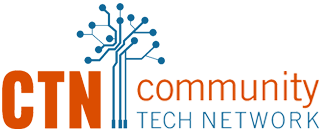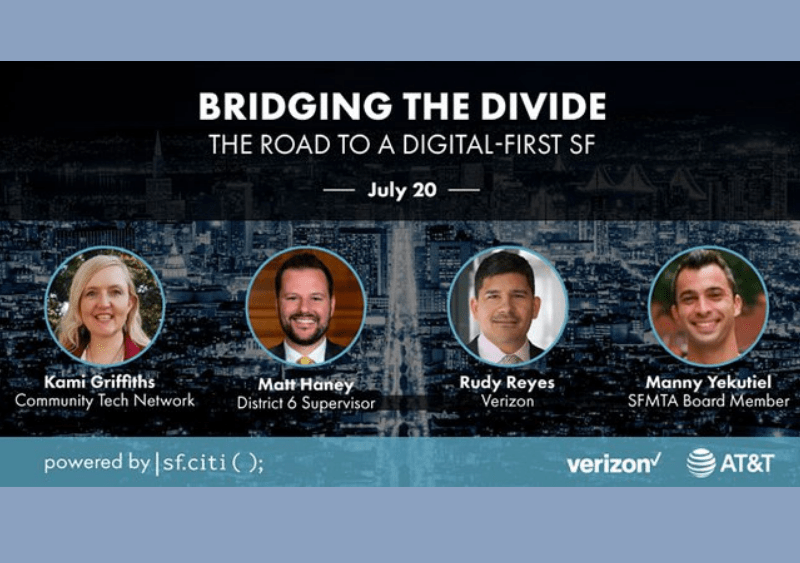Home to Silicon Valley and several major tech companies, San Francisco is a global leader in technological innovation. And yet, thousands of its residents lack high-speed internet access and the digital skills to use it. In a recent webinar, sf.citi executive director Jennifer Stojkovic spoke with local leaders about the current state of the digital divide in San Francisco. The discussion included CTN’s executive director Kami Griffiths, District 6 supervisor Matt Haney, West Region vice president and associate general counsel at Verizon Rudy Reyes, and small business owner Manny Yekutiel.
While there is no silver bullet solution to the digital divide, the webinar made it clear that collaboration between disparate fields is crucial to creating a digital-first San Francisco. The conversation spanned a range of topics — from low-cost internet options to increased competition for service providers to the potential impacts of 5G networks.
As the nonprofit leader on the panel, Kami Griffiths offered unique insight on how to address the digital divide beyond internet access and infrastructure. Touching on the “adoption gap,” Griffiths explains that many people who have access to the internet choose not to use it. “Adoption [means] do they have a device, do they know how to use the device, do they understand the relevancy of it?” Griffiths said. “And what we’re seeing is that people lack access, and some don’t see why they need it, especially older adults who are insecure about the internet and their digital skills.”
This hesitancy is fueled by a fear of new technology, lack of confidence in one’s digital skills, or unawareness of broadband’s benefits and advantages. To reach the digitally hesitant, access alone won’t cut it. We must provide empathy-driven training methods that (1) convince users of broadband’s necessity and usefulness and (2) support people in learning how to navigate the internet.
Going on to discuss digital equity and community need, Kami offered initial steps to getting communities online:
- Securing affordable internet service (like Comcast Internet Essentials)
- Taking in device donations and redistributing those to your community or taking in monetary donations to buy devices
- Getting trained as a trainer — by an organization like CTN — to offer programming yourself
- Engaging volunteers and promoting corporate volunteerism
- Spreading awareness about the benefits and importance of using the internet
CTN is grateful for the opportunity to participate in such a diverse and expansive discussion. Through our collective efforts with government agencies, companies, like-minded organizations, and individuals, we hope to advocate for digital literacy as an essential component of solving the digital divide.
Want to learn more? Check out the live recording or read the full recap at sfciti.org.


Comments are closed.